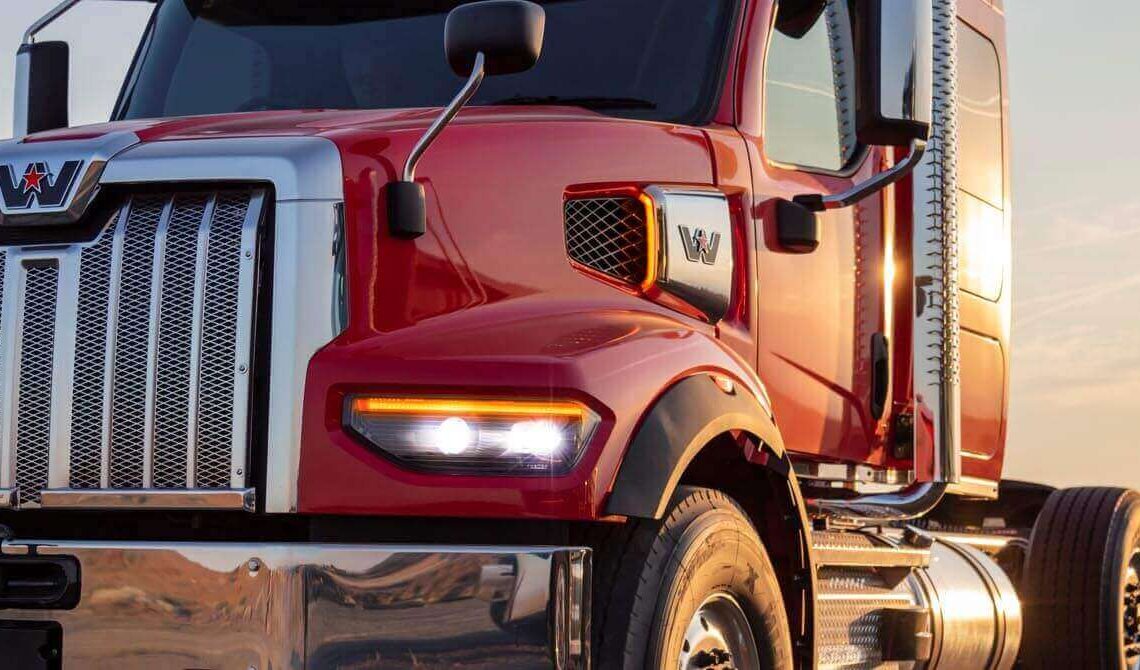A shock absorber is an essential component of any vehicle’s suspension system, and when it comes to heavy-duty trucks like the Peterbilt, it becomes even more crucial. Designed to dampen the impact of bumps, potholes, and uneven road surfaces, a high-quality shock absorber for Peterbilt trucks ensures a smooth and comfortable ride while also improving overall handling and stability. These specially engineered shock absorbers are built to withstand the demands of heavy loads and rough terrain, providing superior control and reducing the wear and tear on other suspension components. Whether you are a long-haul trucker or a fleet owner, investing in a reliable shock absorber for your Peterbilt is essential for optimal performance and driver comfort.
The Ultimate Guide to Choosing the Best Shock Absorber for Your Peterbilt Truck
When it comes to your Peterbilt truck, having the right shock absorbers can greatly impact your ride quality and overall performance. With so many options available in the market, it can be overwhelming to make the right choice. That’s why we have created the ultimate guide to help you choose the best shock absorber for your Peterbilt truck.
Here are the key factors to consider when selecting a shock absorber:
- Driving Conditions: Consider the type of terrain you will be driving on – whether it’s highway driving, off-roading, or a combination of both.
- Quality and Durability: Look for shock absorbers that are made from high-quality materials and are built to withstand the demands of heavy-duty usage.
- Manufacturer Reputation: Research and choose reputable brands known for producing reliable shock absorbers for Peterbilt trucks.
Everything You Need to Know about Shock Absorbers for Peterbilt Trucks
Shock absorbers play a crucial role in ensuring a smooth and comfortable ride for Peterbilt trucks. They help to minimize the impact of bumps and uneven terrain, providing stability and control to the vehicle. Here is everything you need to know about shock absorbers for Peterbilt trucks:
- Function: Shock absorbers are designed to absorb and control the energy generated from road vibrations and impacts. They work by converting kinetic energy into heat, which is then dissipated.
- Types: There are three main types of shock absorbers used in Peterbilt trucks: hydraulic, gas, and spring dampers. Hydraulic shock absorbers use hydraulic fluid to control motion, while gas shock absorbers use pressurized gas. Spring dampers combine the functions of a conventional shock absorber with a spring.
- Replacement: It is recommended to replace shock absorbers every 50,000 miles or as specified by the manufacturer. Regular inspections should be conducted to check for signs of wear or damage.
- Choosing the Right Shock Absorbers: When selecting shock absorbers for your Peterbilt truck, consider factors such as vehicle weight, driving conditions, and intended use. It is advisable to consult with a knowledgeable technician or refer to the manufacturer’s recommendations.
Overall, understanding the importance of shock absorbers and taking proper care of them is vital for ensuring the optimal performance and safety of your Peterbilt truck. Regular maintenance and timely replacement of worn shock absorbers will contribute to a smoother ride and prolonged lifespan for your vehicle.
Choosing the Right Shock Absorber for Your Peterbilt Truck: Key Factors to Consider
Choosing the Right Shock Absorber for Your Peterbilt Truck: Key Factors to Consider
When it comes to ensuring a smooth and safe ride for your Peterbilt truck, choosing the right shock absorber is crucial. With so many options available in the market, it can be overwhelming to make the right choice. However, considering a few key factors can help you narrow down your options and select the perfect shock absorber for your specific needs.
Here are some important factors to consider:
1. Load Capacity: Assessing the weight capacity of your Peterbilt truck is essential in determining the appropriate shock absorber for your vehicle. Different shock absorbers are designed to handle different load capacities, so choose one that matches your truck’s weight requirements.
2. Driving Conditions: Take into account the type of terrain and driving conditions you typically encounter. If you frequently drive on rough and uneven surfaces, opt for shock absorbers that offer superior dampening capabilities and durability.
4. Construction and Build Quality: Look for shock absorbers made from high-quality materials that can withstand the rigors of heavy-duty trucking. Opt for reputable brands known for their durability and reliability.
5. Price and Warranty: While price shouldn’t be the sole determining factor, it is important to consider your budget. Compare prices of different shock absorber options and also look for a warranty that ensures the longevity of the product.
By carefully considering these factors, you can choose the right shock absorber for your Peterbilt truck that will provide optimal performance, handling, and comfort for your driving needs.
The Latest Advancements in Shock Absorber Technology for Peterbilt Trucks
The Latest Advancements in Shock Absorber Technology for Peterbilt Trucks
As technology continues to evolve, the shock absorber industry has also witnessed significant advancements to enhance the performance and safety of Peterbilt trucks. These latest innovations aim to improve ride quality, reduce vibrations, and increase overall vehicle stability. Here are some of the recent advancements in shock absorber technology for Peterbilt trucks:
1. Adaptive Damping Systems: One of the notable advancements is the integration of adaptive damping systems in shock absorbers. These systems use sensors to continuously monitor the road conditions and adjust the damping force accordingly. This allows for real-time optimization of the suspension, ensuring a smoother and more controlled ride.
2. Electronic Control: Shock absorbers with electronic control provide enhanced precision and control over suspension dynamics. These systems utilize electronic sensors and actuators to actively adjust damping characteristics in response to changing road conditions. This technology allows for improved handling, stability, and comfort.
3. Remote Reservoirs: Some shock absorbers now feature remote reservoirs, which separate the oil and gas chambers. This design enables better heat dissipation and reduces the chances of shock fade during demanding driving conditions. Remote reservoirs also allow for increased oil capacity, improving overall performance.
4. Progressive Damping: Progressive damping technology allows shock absorbers to adapt to varying levels of impact. This means that as the intensity of the impact increases, the shock absorber automatically adjusts to provide greater dampening force. This results in improved stability, control, and comfort, especially during sudden maneuvers or rough terrains.
5. Enhanced Durability: Advancements in material sciences and manufacturing techniques have led to shock absorbers with improved durability. These new shock absorbers offer greater resistance to corrosion, wear, and leakage, ensuring a longer lifespan and reliable performance.


